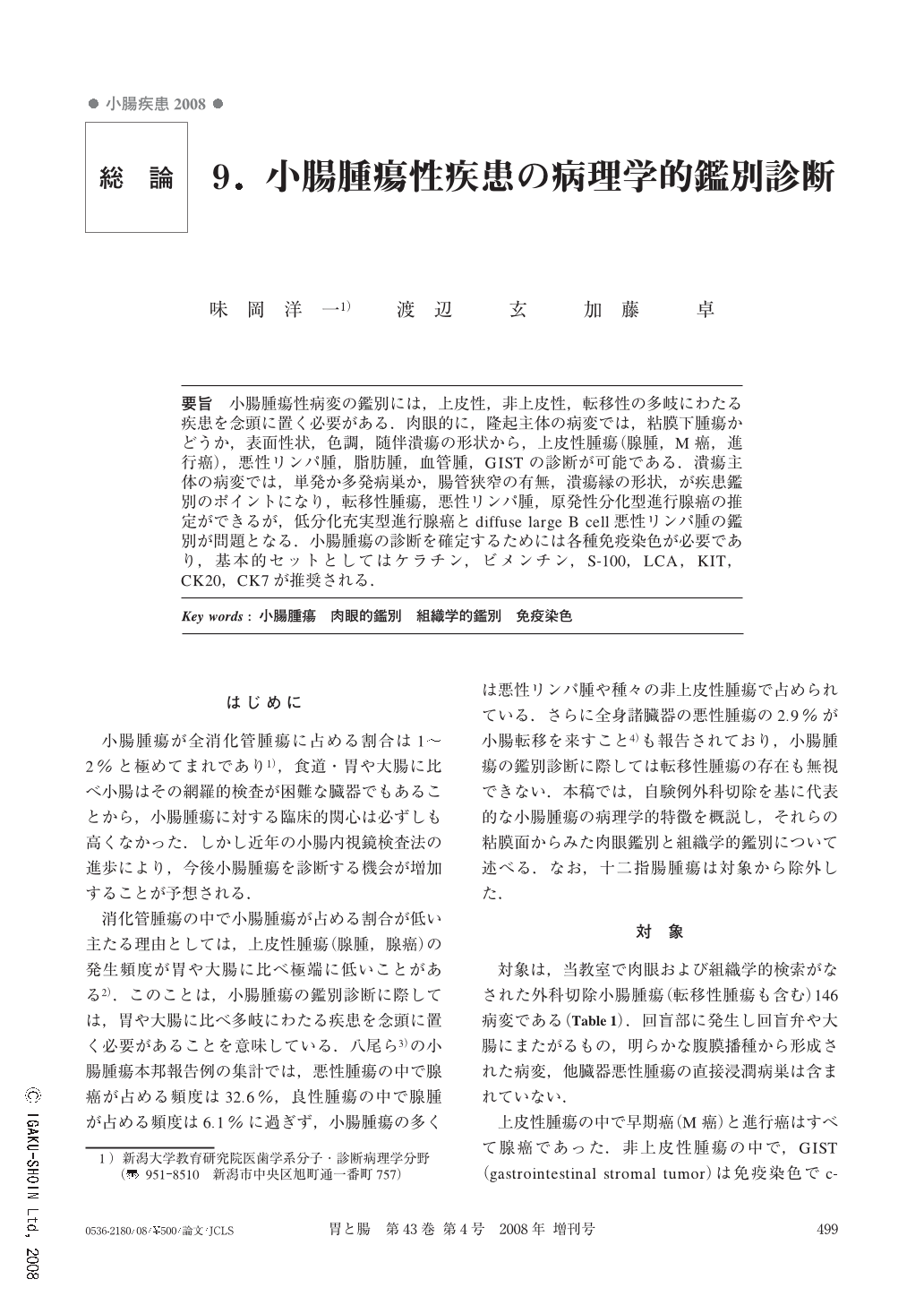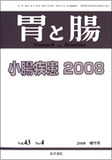Japanese
English
- 有料閲覧
- Abstract 文献概要
- 1ページ目 Look Inside
- 参考文献 Reference
- サイト内被引用 Cited by
要旨 小腸腫瘍性病変の鑑別には,上皮性,非上皮性,転移性の多岐にわたる疾患を念頭に置く必要がある.肉眼的に,隆起主体の病変では,粘膜下腫瘍かどうか,表面性状,色調,随伴潰瘍の形状から,上皮性腫瘍(腺腫,M癌,進行癌),悪性リンパ腫,脂肪腫,血管腫,GISTの診断が可能である.潰瘍主体の病変では,単発か多発病巣か,腸管狭窄の有無,潰瘍縁の形状,が疾患鑑別のポイントになり,転移性腫瘍,悪性リンパ腫,原発性分化型進行腺癌の推定ができるが,低分化充実型進行腺癌とdiffuse large B cell悪性リンパ腫の鑑別が問題となる.小腸腫瘍の診断を確定するためには各種免疫染色が必要であり,基本的セットとしてはケラチン,ビメンチン,S-100,LCA,KIT,CK20,CK7が推奨される.
Various types of tumors have to be taken into consideration for differential diagnosis of tumors of the small intestine. For elevated tumors, epithelial neoplasms, malignant lymphoma, lipoma, hemangioma, and GIST can be differentiated by whether or not it is submucosal tumor, surface appearance and color, and the presence of small but deep associated ulcer. For ulcerted tumor, number of lesions (single or multiple), stricture of the intestinal wall, shape of the ulcer margin are important findigs for the diagnosis, and metastatic tumor, malignant lymphoma, and advanced tubular adenocarcinoma can be differentiated. Howere, it seems to be difficult to differentiate advanced poorly differentiated adenocarcinoma with medullary growth and diffuse large B cell lymphoma. For the confirmation of the diagnosis, immunohistochemistry is necessary and it is recommended to use keratin, vimentin, S-100, LCA, KIT, CK20, and CK7 as a basic set.

Copyright © 2008, Igaku-Shoin Ltd. All rights reserved.


